Plaque is a film of bacteria that coats your teeth if you don't brush them properly. It contributes to gum disease, tooth decay and cavities.
Toothbrushing stops plaque building up. It isn't just about moving some toothpaste around your mouth, though. You need to concentrate on the nooks and crannies to make sure you remove as much plaque and leftover bits of food as possible.
Toothbrush tips
- Replace your brush or brush attachment every three months.
- Never share your toothbrush as this can spread infections.
- Brush your teeth twice daily with fluoride toothpaste for at least two minutes.
When should I brush my teeth?
Brush your teeth for at least two minutes in the morning before breakfast and last thing at night before you go to bed.
Never brush your teeth straight after a meal as it can damage your teeth, especially if you've had fruit, fizzy drinks, wine or any other food that contains acid.
This is because tooth enamel is softened by the acid and can be worn away by brushing. Instead, wait an hour after a meal before brushing your teeth to give your saliva chance to neutralise the acid.
Should I use an electric or manual toothbrush?
It doesn't matter whether you use an electric or manual toothbrush. They're both equally good as long as you brush with them properly. However, some people find it easier to clean their teeth thoroughly with an electric toothbrush.
What should I look for in a toothbrush?
For most adults, a toothbrush with a small head and a compact, angled arrangement of long and short, round-end bristles is fine. Medium or soft bristles are best for most people. Use an electric brush with an oscillating or rotating head. If in doubt, ask your dentist.
What type of toothpaste should I use?
The cleaning agents and particles in toothpaste help to remove plaque from your teeth, keeping them clean and healthy.
Most toothpastes also contain fluoride, which helps to prevent and control cavities. It’s important to use a toothpaste with the right concentration of fluoride. Check the packaging to find out how much fluoride each brand contains.
- Children aged up to three: use a smear of toothpaste containing no less than 1,000ppm (parts per million) fluoride.
- Children aged three to six: use a pea-sized amount of toothpaste containing 1,350-1,500ppm fluoride.
- Adults: use a toothpaste that contains at least 1,450ppm fluoride.
It's fine for babies and children to use the family toothpaste rather than a special children's toothpaste, provided it contains the right concentration of fluoride.
How to brush your teeth
The British Dental Health Foundation gives the following advice on how to brush your teeth:
- Place the head of your toothbrush against your teeth, then tilt the bristle tips to a 45 degree angle against the gum line. Move the brush in small circular movements, several times, on all the surfaces of every tooth.
- Brush the outer surfaces of each tooth, upper and lower, keeping the bristles angled against the gum line.
- Use the same method on the inside surfaces of all your teeth.
- Brush the chewing surfaces of the teeth.
- To clean the inside surfaces of the front teeth, tilt the brush vertically and make several small circular strokes with the toe (the front part) of the brush.
- Brushing your tongue will freshen your breath and clean your mouth by removing bacteria.
Dental Care
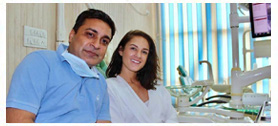
Regular dental care is an important part of oral health. Having healthy teeth and gums isn't a given, though.

Dental Tourism
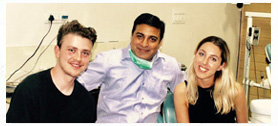
Our dental tourism packages, transport you to the world of royalty in all its regal splendor. An experience of a lifetime awaits you...

Brushing your teeth
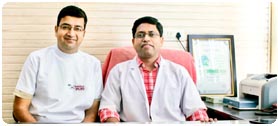
Your teeth are meant to last a lifetime! Tooth decay, or cavities, and periodontal disease, also known as gum disease, can ..

Oral Health Problems
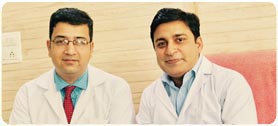
If one or more of your teeth are missing, there are a number of ways to replace them. An alternative to bridges, partials or complete...

Patient Gallery
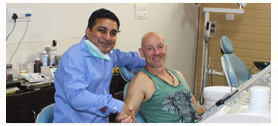
Here's just a few "before-and-after" photos of some of our most common procedures. Come in and see how we can enhance your smile.


